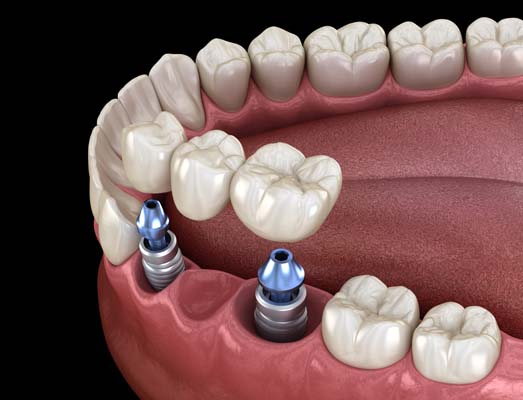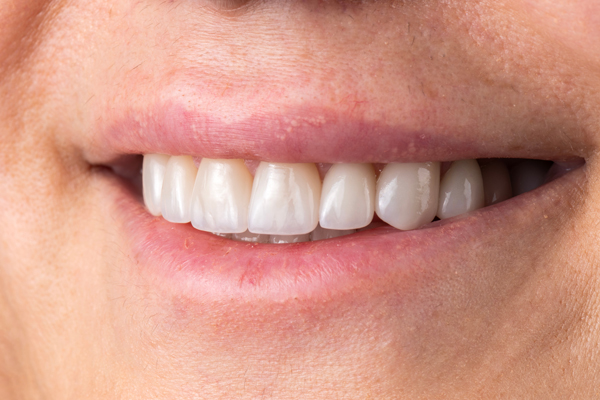4 Tips for Dental Bridges Aftercare

You should always take care of your teeth, but it becomes especially important when you have dental bridges. Here are four proven tips to help maintain your dental bridges at home so they can last longer. These cleaning tips will help prevent cavities under your dental bridge and prevent extra unexpected trips to the dentist.
Floss regularly
Every dentist will tell you this after your procedure. Cleaning under your dental bridges is extremely important for longevity. Using soft picks to reach underneath the bridge and keep plaque from building up is a great strategy. You can buy soft picks at any local drugstore for a very affordable price. There is also specific dental floss made for bridges you can pick up too.
You won’t floss the bridge like regular teeth because there will not be a gap between them. So instead, you have to get underneath the bridge to clean. This should be done two times a day after meals, precisely and consistently. This will make sure no food particles stay underneath the bridge for too long, causing issues.
Use a waterpik
A waterpik is just a more advanced and very effective way to floss. A waterpik is a water flosser that shoots water wherever you point it. This is a great way to remove large amounts of plaque from behind a dental bridge and maintain an overall clean mouth. Not only do they work great, but they are also highly affordable. You can pick up a waterpik at the nearest Walmart or drugstore for less than $50 typically.
Dentists recommend using a waterpik in the morning and at night to clean underneath your bridge and other teeth to create excellent oral hygiene. Using them in the shower is an excellent tactic because they are pretty messy. Using a waterpik has shown incredible results for dental bridge patients, and dentists recommend them frequently.
Brush your teeth regularly
Same as the reasons above, brushing your teeth limits the amount of plaque in your mouth which keeps your mouth and gums healthy. Having a cavity underneath your dental bridge requires the dentist to ruin the current dental bridge and make a new one after the cavity is taken care of. Not only could plaque cause a cavity, but it could also cause gum disease, which would be less than ideal as well. Continual and consistent cleaning is the best way to keep your dental bridge healthy and in proper working order.
Visiting your dentist
It is vital to continue to get hygiene cleanings and check-ups at the dentist after your procedure. The recommendation is to get your teeth cleaned every six months, and with dental bridges, this is extremely important to keep up with. Along with professional cleanings, you should also get check-ups with the dentist regularly. They will make sure nothing is going on underneath the bridge and that your gums are still in healthy condition.
Having a build-up of plaque underneath the bridge can cause cavities and gum disease, both harmful to your health. These conditions are things you may not be able to notice at home and catching them early could prevent further damage to your mouth. So having a professional look at your mouth regularly after a dental bridge is put in is extremely important.
Request an appointment here: https://www.yourfamilysmiles.com or call Family Dental Care of Chicago at (773) 250-1194 for an appointment in our Chicago office.
Check out what others are saying about our dental services on Yelp: Dental Bridges in Chicago, IL.
Recent Posts
If you have an extensively decayed tooth or the filling applied is too big for your tooth to support it, your dentist will probably recommend putting in a dental crown. This is a prosthesis designed to look like a natural tooth, but it is hollow inside to fit over the damaged tooth. In addition to…
A dental crown is used to restore teeth that are in bad shape. Oftentimes, they are needed for teeth that have become cracked, chipped or broken. Additionally, general dentists recommend them for teeth that have severely decayed due to an infection. While they are one of the most common dental restorations, many wonder how long…
Dental crowns are among the most common types of restorative treatments dentists provide. A crown has many uses and benefits. Not only can it restore the aesthetics of your smile, but it relieves pain, protects a damaged tooth, and prevents further problems from occurring to weak teeth. The process of getting a crown can require…
Dental crowns are to thank for restoring teeth that are in bad shape. However, once they are placed, it is up to the patient to ensure that the crown does its job.There are a few things that dentists recommend once a dental crown has been placed. These recommendations can be extremely helpful when trying to…


